| Bogleech Presents The Top Twenty Coolest Beetles - PART II |
| #10 - Cicindelinae - The Tiger Beetles |
These voracious, angry-looking predators are yet another subfamily of the diverse "carabids" or "ground
beetles." As adults, tiger beetles are keen-eyed and incredibly fast hunters, chasing down other insects and
tearing them apart in their wicked mandibles. They include the fearsomely named and just plain fearsome
Manticora, considered the largest predatory beetle in the world. Cool as they are in their adult life, tiger
beetles also have highly unusual, equally monstrous larvae:
beetles." As adults, tiger beetles are keen-eyed and incredibly fast hunters, chasing down other insects and
tearing them apart in their wicked mandibles. They include the fearsomely named and just plain fearsome
Manticora, considered the largest predatory beetle in the world. Cool as they are in their adult life, tiger
beetles also have highly unusual, equally monstrous larvae:
| #9 - Duliticola - the Trilobite Beetles |
These unusual looking tropical insects exhibit my favorite type of adult stage: the larviform adult stage! It is
often easier to find a mate when one sex stays put and the other goes on the prowl, so the females of this
genus don't bother to develop wings or even fully metamorphose at all, retaining their larval anatomy for life.
These flattened, armored forms are well protected against many insect predators, and their incredibly tiny
heads can be pulled turtle-like into the rest of the body. Males metamorphose into tinier, more
conventional-looking beetles and take wing in search of the weird, wormy females, who may be up to six
times times their own size.
often easier to find a mate when one sex stays put and the other goes on the prowl, so the females of this
genus don't bother to develop wings or even fully metamorphose at all, retaining their larval anatomy for life.
These flattened, armored forms are well protected against many insect predators, and their incredibly tiny
heads can be pulled turtle-like into the rest of the body. Males metamorphose into tinier, more
conventional-looking beetles and take wing in search of the weird, wormy females, who may be up to six
times times their own size.
| Photo by Pbertner - click for many more images of exotic and rare invertebrates! |
| #8 - Phengodidae - the Glow-worm Beetles |
Though not quite as exotic looking as trilobite beetles, the family Phengodidae (which include the
awesome-sounding genus Phrixothrix) are another group with larviform females, commonly known as
"railroad worms" and distinguished by two different colors of bioluminescence; yellow-green on the body and
red on the head. Multiple colors of light are quite rare in nature, and it isn't even known why these insects
produce light at all. Unlike fireflies, it is scent alone that females use to attract the adult male - a tiny, delicate
creature resembling a moth more than a beetle, which like many other male insects, lives so briefly he may
never even eat. Perhaps even stranger than their mysterious lights are their dietary habits; larvae and
females prey almost exclusively upon millipedes, usually biting their heads off and chewing their way inside.
awesome-sounding genus Phrixothrix) are another group with larviform females, commonly known as
"railroad worms" and distinguished by two different colors of bioluminescence; yellow-green on the body and
red on the head. Multiple colors of light are quite rare in nature, and it isn't even known why these insects
produce light at all. Unlike fireflies, it is scent alone that females use to attract the adult male - a tiny, delicate
creature resembling a moth more than a beetle, which like many other male insects, lives so briefly he may
never even eat. Perhaps even stranger than their mysterious lights are their dietary habits; larvae and
females prey almost exclusively upon millipedes, usually biting their heads off and chewing their way inside.
| #7 - Cassidinae - the Tortoise Beetles |
An "ugly duckling" story for you weirdos who think an insect can be ugly, this hairy monster is a typical larval
leaf beetle of the order "Cassidinae," and that large, brown lump on its back is a dense mass of its own
dried-up excrement. Every time nature calls, this little guy keeps it, adding to a protective shield that many
predators would rather not put in their mouths. The +1 Excremental Armor protects the insect all the way
through its immobile pupal stage, until it emerges as a beetle whose colorful cuteness kicked those
over-hyped "ladybugs" (ladybird beetles) clear off the list:
leaf beetle of the order "Cassidinae," and that large, brown lump on its back is a dense mass of its own
dried-up excrement. Every time nature calls, this little guy keeps it, adding to a protective shield that many
predators would rather not put in their mouths. The +1 Excremental Armor protects the insect all the way
through its immobile pupal stage, until it emerges as a beetle whose colorful cuteness kicked those
over-hyped "ladybugs" (ladybird beetles) clear off the list:
| #6 - The Garden-backed Weevils |
Unfortunately camera-shy, several species of large, flightless New Guinea weevils employ a rare form of
camouflage by encouraging the growth of fungi, lichens, algae and tiny plants on their specially pitted bodies.
These symbiotic gardens are in turn inhabited by tiny mites yet to be found anywhere else, and it is thought
that the mites themselves may carry spores from one beetle to the next. Tiny insects called Psocids
(booklice) have also been observed on some species, as well as nematode worms, rotifers, protozoa and
diatoms. Many of these species may be unique to the backs of these insects, and we have yet to unravel the
extent to which these many different lifeforms interact with one another on their miniature mobile worlds. The
size of certain lichens on some specimens indicates that these weevils may live decades at a time - unusual
enough for insects and completely unheard of in adult beetles.
camouflage by encouraging the growth of fungi, lichens, algae and tiny plants on their specially pitted bodies.
These symbiotic gardens are in turn inhabited by tiny mites yet to be found anywhere else, and it is thought
that the mites themselves may carry spores from one beetle to the next. Tiny insects called Psocids
(booklice) have also been observed on some species, as well as nematode worms, rotifers, protozoa and
diatoms. Many of these species may be unique to the backs of these insects, and we have yet to unravel the
extent to which these many different lifeforms interact with one another on their miniature mobile worlds. The
size of certain lichens on some specimens indicates that these weevils may live decades at a time - unusual
enough for insects and completely unheard of in adult beetles.
| #4 - Photuris - Firefly-eating Fireflies |
I've written about these insects more hilariously on cracked.com, but hopefully you'll forgive me for a
couple of reruns. As with humans, some lady fireflies go out at night expecting to find the perfect match,
settle down and start a family..while others are just insatiable she-devils devouring fresh man-meat night
after night. These are females of the genus Photuris, who mimic the mating flashes of other species to prey
upon gullible males, reducing competition for their larvae and even absorbing the prey's defensive toxins for
their own benefit - like a prostitute stabbing a guy just to steal his gun.
Bizarrely, some Photuris species have spent so much time adapting the signals of other species that they no
longer have a signal for their own males - so how does the male Photuris find the female? Easy: he, too,
responds to the signals of other species, eventually finding a lady Photuris who thought she was drawing in
her next meal.
couple of reruns. As with humans, some lady fireflies go out at night expecting to find the perfect match,
settle down and start a family..while others are just insatiable she-devils devouring fresh man-meat night
after night. These are females of the genus Photuris, who mimic the mating flashes of other species to prey
upon gullible males, reducing competition for their larvae and even absorbing the prey's defensive toxins for
their own benefit - like a prostitute stabbing a guy just to steal his gun.
Bizarrely, some Photuris species have spent so much time adapting the signals of other species that they no
longer have a signal for their own males - so how does the male Photuris find the female? Easy: he, too,
responds to the signals of other species, eventually finding a lady Photuris who thought she was drawing in
her next meal.
| #3 - Meloe Franciscanus - Parasitoid Blister Beetle |
This is another one I covered on cracked, but they didn't show any images of the adult stage, an "oil beetle"
like this one. Often ant-like or wasp-like in appearance, the blister beetles (meloidae) are so named for the
skin-searing toxin they sweat when unhappy. In some species this toxin is powerful enough to kill a horse if it
contaminates their feed, though the secretions of some species also go by the name name "spanish fly" - an
age-old aphrodisiac. The lifestyles and diets of the Meloidae vary to a remarkable degree, and a few species
are even "brood parasitoids," meaning that they sneak their carnivorous larvae into the nests of other insects.
like this one. Often ant-like or wasp-like in appearance, the blister beetles (meloidae) are so named for the
skin-searing toxin they sweat when unhappy. In some species this toxin is powerful enough to kill a horse if it
contaminates their feed, though the secretions of some species also go by the name name "spanish fly" - an
age-old aphrodisiac. The lifestyles and diets of the Meloidae vary to a remarkable degree, and a few species
are even "brood parasitoids," meaning that they sneak their carnivorous larvae into the nests of other insects.
| #2 - Paussinae - the Flanged Bombardier Beetles |
Yeah, bombardiers already made it onto the list, but that was Brachininae. This is Paussinae. Keep up! The
Paussinae are cousins to the Brachininae who may or may not have evolved their chemical defenses
independently, a debate which has raged for over a century. Their bombing power, however, is just one of
the Paussinae's many cool traits.
Paussinae are cousins to the Brachininae who may or may not have evolved their chemical defenses
independently, a debate which has raged for over a century. Their bombing power, however, is just one of
the Paussinae's many cool traits.
| Written by Jonathan Wojcik |
There are many, many species of Cassidinae in a variety of shapes, colors and sizes found all throughout
the world, most of them possessing a broad, flat shell which can seal sucker-like to the surface of smooth
leaves with incredible strength. They are commonly called "tortoise beetles," though they share the moniker
with several other groups of leaf beetle previously classified as one.
the world, most of them possessing a broad, flat shell which can seal sucker-like to the surface of smooth
leaves with incredible strength. They are commonly called "tortoise beetles," though they share the moniker
with several other groups of leaf beetle previously classified as one.
| #5 - Amblyopinina - the flea hunters |
Often found on the bodies of small rodents and with mammalian blood in their bellies, it's understandable that
the Amblyopinines - a group of rove beetles - were long thought to be parasitic, though their rodent hosts
seemed mysteriously undisturbed by their presence, making no effort to remove these relatively large insects
from their fur. We now know that certain mice and rats outright avoid harming these creatures, and even
allow them to run loose in the bedding where their tiny, helpless pups are asleep. It sounds like rather typical
parasitic treachery, but in reality, these beetles aren't after blood at all; the various species prey almost
exclusively upon the mites, ticks, lice and fleas inhabiting rodent nests, living in harmony with mammals as
tiny anti-bug police. Nature not only invented the exterminator, but gave the job to a bigger bug. She's just
funny like that.
the Amblyopinines - a group of rove beetles - were long thought to be parasitic, though their rodent hosts
seemed mysteriously undisturbed by their presence, making no effort to remove these relatively large insects
from their fur. We now know that certain mice and rats outright avoid harming these creatures, and even
allow them to run loose in the bedding where their tiny, helpless pups are asleep. It sounds like rather typical
parasitic treachery, but in reality, these beetles aren't after blood at all; the various species prey almost
exclusively upon the mites, ticks, lice and fleas inhabiting rodent nests, living in harmony with mammals as
tiny anti-bug police. Nature not only invented the exterminator, but gave the job to a bigger bug. She's just
funny like that.
The unique-looking larvae of the Paussinae typically live like reversed tiger beetle larvae (see above),
building a tunnel which they plug with their sensitive "anal disk" and bending backwards to grapple passing
prey (VIDEO OF THIS). In some species, the disk itself even folds over tiny insects like a venus fly trap; they
trap animals in their butt. Fate worse than death?
building a tunnel which they plug with their sensitive "anal disk" and bending backwards to grapple passing
prey (VIDEO OF THIS). In some species, the disk itself even folds over tiny insects like a venus fly trap; they
trap animals in their butt. Fate worse than death?
| #1 - Nicrophorus Pustulatus - the Part-time Parasitoid Burying Beetle |
I know, I know...I've already given Nicrophorus beetles another #1 spot for their ooky spooky
corpse-burying mating ritual, but the gruesomely named "pustulated" carrion beetle adds an even darker,
weirder twist - a ghoul among ghouls. While they still engage in the kinky burial rites of other Nicrophorus,
this particular species will also resort to brood parasitism of fellow burying beetles, and more shockingly,
brood parasitism of SNAKES. Yes, with the eggs of snakes available, pustulatus will forego the
grave-digging and lay eggs right alongside the developing serpents, even adjusting the number of their own
eggs in proportion to those of the predatory reptiles. Mother snake may diligently protect her eggs from
larger predators, but will never know that tiny larvae are consuming them from within. This makes pustulatus
the first known insect parasitoid with vertebrates as a natural host; just one more step towards the mass
insect uprising we all know is inevitable.
corpse-burying mating ritual, but the gruesomely named "pustulated" carrion beetle adds an even darker,
weirder twist - a ghoul among ghouls. While they still engage in the kinky burial rites of other Nicrophorus,
this particular species will also resort to brood parasitism of fellow burying beetles, and more shockingly,
brood parasitism of SNAKES. Yes, with the eggs of snakes available, pustulatus will forego the
grave-digging and lay eggs right alongside the developing serpents, even adjusting the number of their own
eggs in proportion to those of the predatory reptiles. Mother snake may diligently protect her eggs from
larger predators, but will never know that tiny larvae are consuming them from within. This makes pustulatus
the first known insect parasitoid with vertebrates as a natural host; just one more step towards the mass
insect uprising we all know is inevitable.
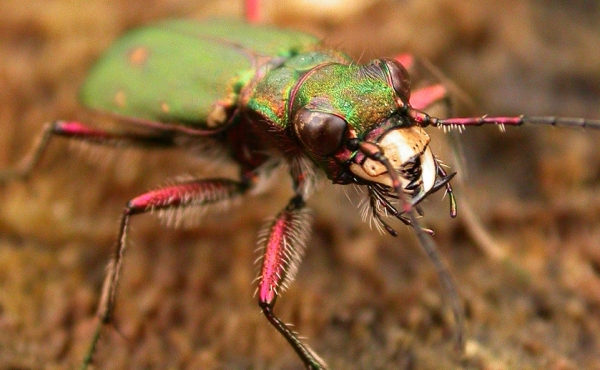
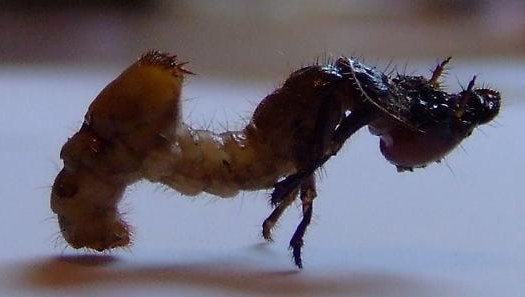
Starkly contrasting the adults, larval tigers are "sit and wait" predators, constructing a tunnel several inches
to even a few feet deep where they will lie in ambush. Plugging the tunnel entrance with its armored,
manhole-like face, the hungry grub gets a full view of its surroundings without looking conspicuous. When
suitable prey draws near, it springs out like a Jack-in-the-box, using its barbed hump to anchor itself while it
drags the victim underground!
to even a few feet deep where they will lie in ambush. Plugging the tunnel entrance with its armored,
manhole-like face, the hungry grub gets a full view of its surroundings without looking conspicuous. When
suitable prey draws near, it springs out like a Jack-in-the-box, using its barbed hump to anchor itself while it
drags the victim underground!
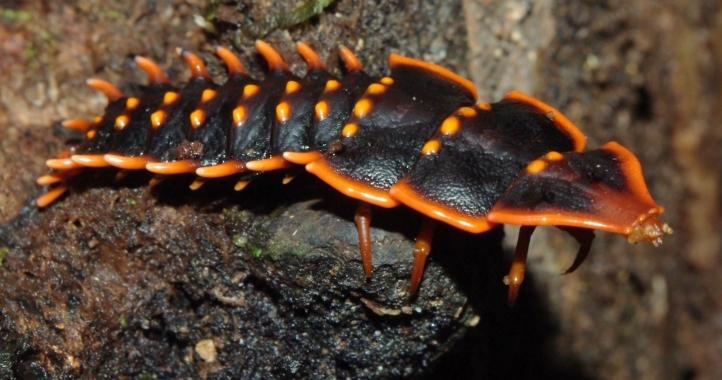
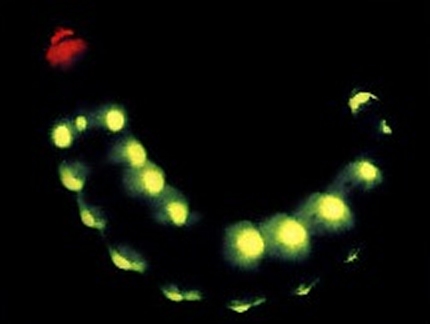
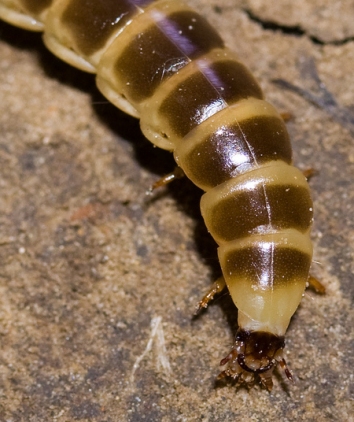
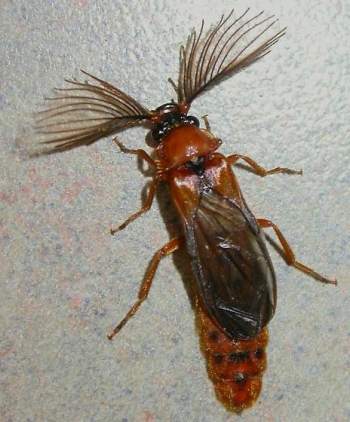
| An adult male photographed by Jeff Hollenbeck, adult female photographed by Ken Ichi |
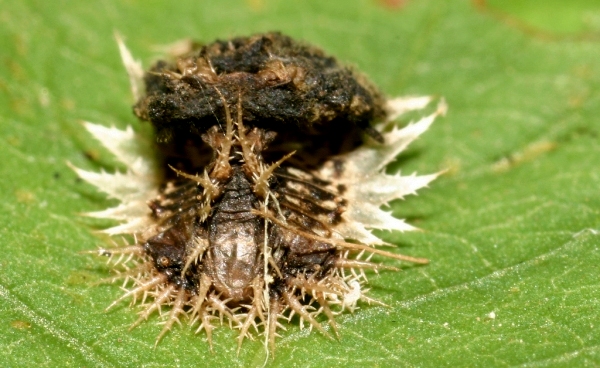
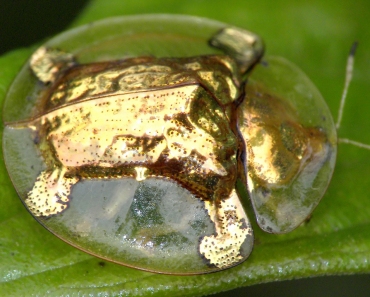
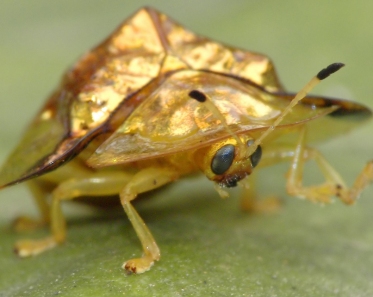
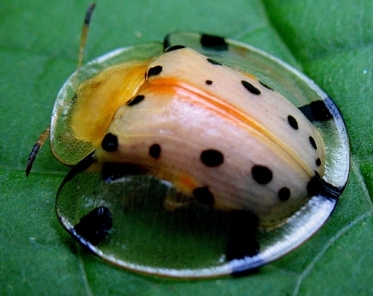

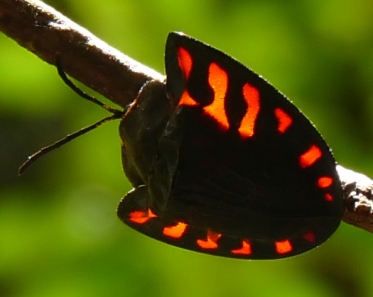
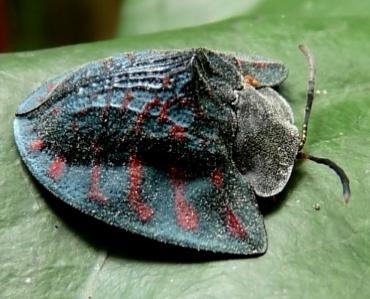
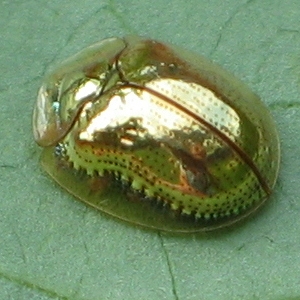
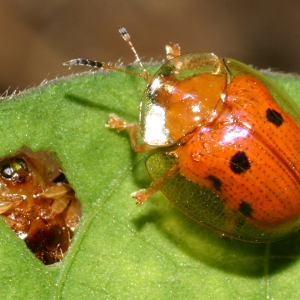
Many Cassidinae can even shift instantaneously between two different color patterns simply by pumping fluid
between the layers of their transparent shell. The two shown here are the exact same species, Charidotella
sexpunctata (sex punk?) which uses the second pattern to discourage predators who find ladybugs
foul-tasting.
between the layers of their transparent shell. The two shown here are the exact same species, Charidotella
sexpunctata (sex punk?) which uses the second pattern to discourage predators who find ladybugs
foul-tasting.
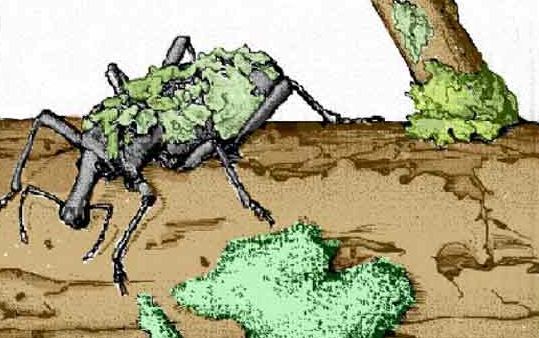
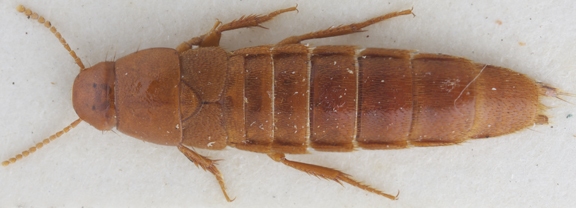
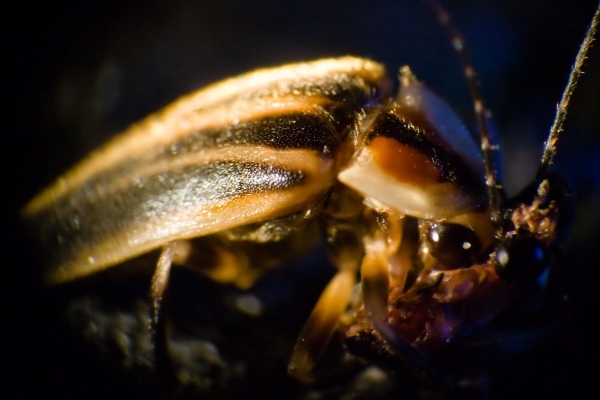
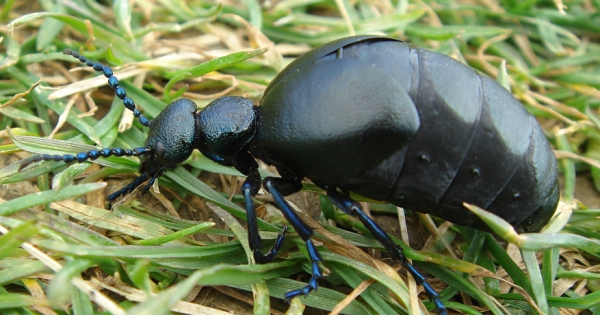
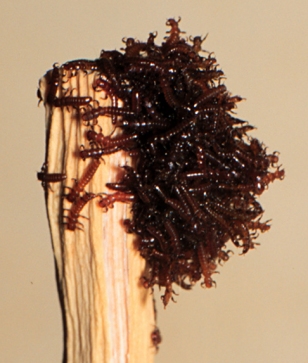
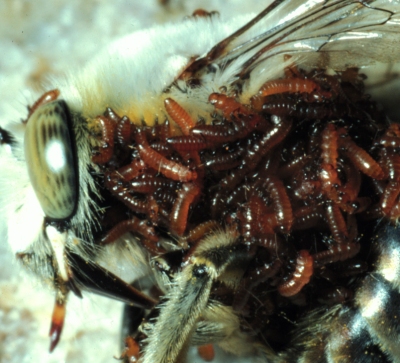
Meloe franciscanus is easily one of the coolest (or creepiest, if you're weird like that) brood parasitoids in the
animal kingdom, as its larvae use a bizarre form of "collective mimicry" seen virtually nowhere else in nature.
Now, to you and I, a clump of franciscanus larvae resemble just another ball of worms, but to certain solitary
bees, the blob bears a striking resemblance to a female bee and even imitates their sexual pheromones.
When an eager stud attempts to mount the glob of grubs, dozens of the baby beetles cling to his fur, riding
him around as he goes hunting for another mate - a real mate. Like Cthulhu's herpes, the spiny larvae will
jump ship to every female their host comes into contact with and ride the new mothers back to their
underground nests, where they can feed upon stored food and finally the developing bees themselves.
Watch the entire process narrated by Sir Attenborough HERE.
animal kingdom, as its larvae use a bizarre form of "collective mimicry" seen virtually nowhere else in nature.
Now, to you and I, a clump of franciscanus larvae resemble just another ball of worms, but to certain solitary
bees, the blob bears a striking resemblance to a female bee and even imitates their sexual pheromones.
When an eager stud attempts to mount the glob of grubs, dozens of the baby beetles cling to his fur, riding
him around as he goes hunting for another mate - a real mate. Like Cthulhu's herpes, the spiny larvae will
jump ship to every female their host comes into contact with and ride the new mothers back to their
underground nests, where they can feed upon stored food and finally the developing bees themselves.
Watch the entire process narrated by Sir Attenborough HERE.
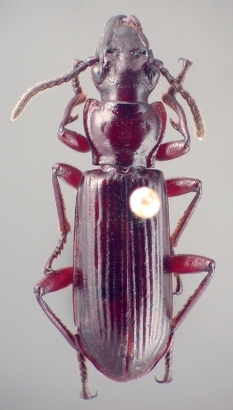
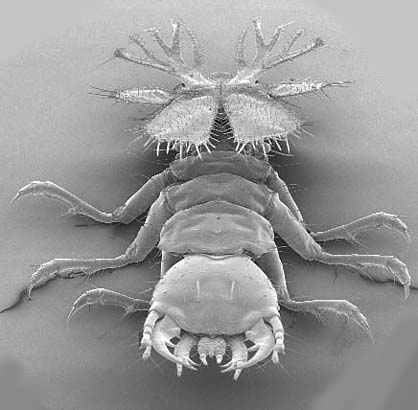
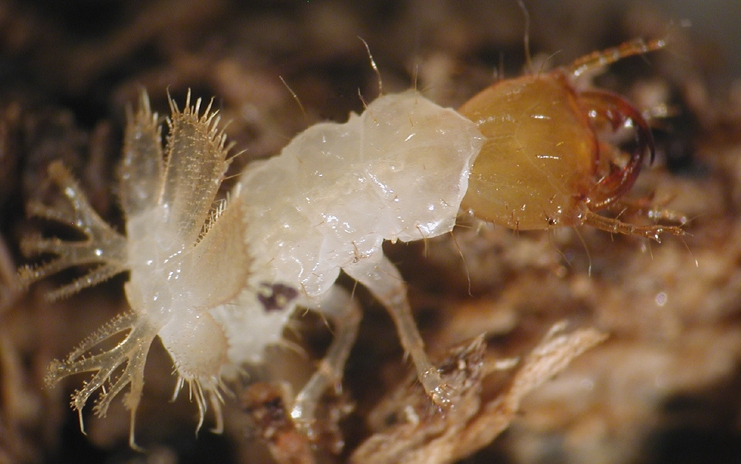
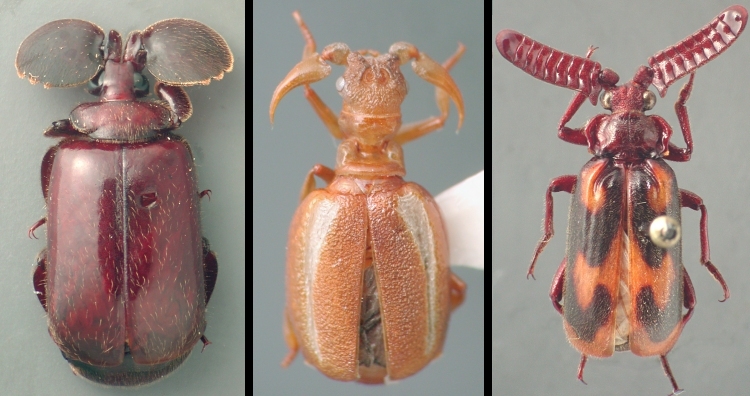
The Paussinae are organized into the tribes Metriini, Ozaenini, Protopaussini and Paussini, of which the
Paussini are nearly always Myrmecophilous, meaning that they live in close association with ants. The exact
functions of their strange, sometimes saucer-like antennae is crudely understood, but ants have been
observed carrying the beetles by these antennae, which seem to secrete chemicals that fool ants into giving
the beetle free roam of their colony. Some of these sneaks feed exclusively on fluids regurgitated by ant
workers, slurping it up with "spoon-like" mouth-parts. Other species are more ghoulish guests, wielding sharp
mandibles to feast on defenseless ant larvae whose older sisters do nothing to stop the baby-eating
freeloader right under their noses.
Paussini are nearly always Myrmecophilous, meaning that they live in close association with ants. The exact
functions of their strange, sometimes saucer-like antennae is crudely understood, but ants have been
observed carrying the beetles by these antennae, which seem to secrete chemicals that fool ants into giving
the beetle free roam of their colony. Some of these sneaks feed exclusively on fluids regurgitated by ant
workers, slurping it up with "spoon-like" mouth-parts. Other species are more ghoulish guests, wielding sharp
mandibles to feast on defenseless ant larvae whose older sisters do nothing to stop the baby-eating
freeloader right under their noses.
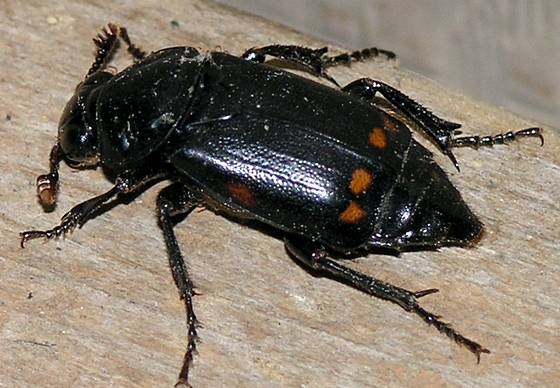
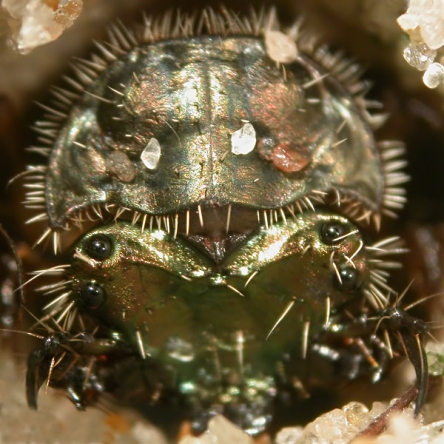
| A rare closeup © Dariusz & Kornelia Kucharscy - see much more on their website or Deviantart! |
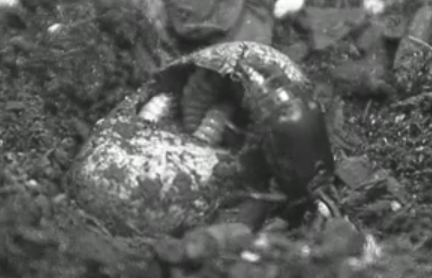
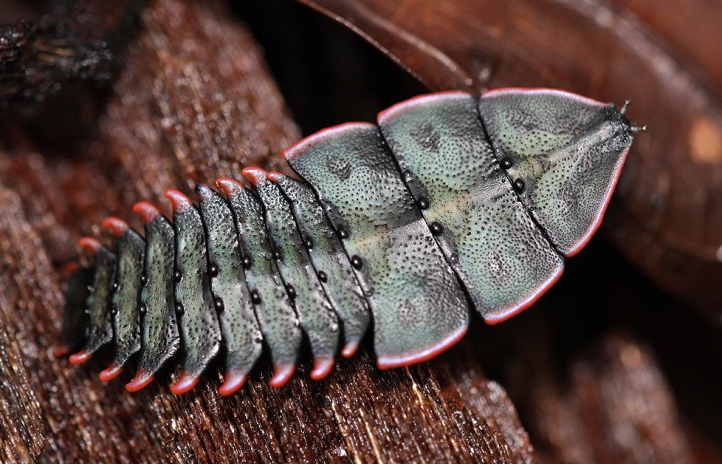
| Photo by Wayne Hsu - gallery features many other wildlife images! |